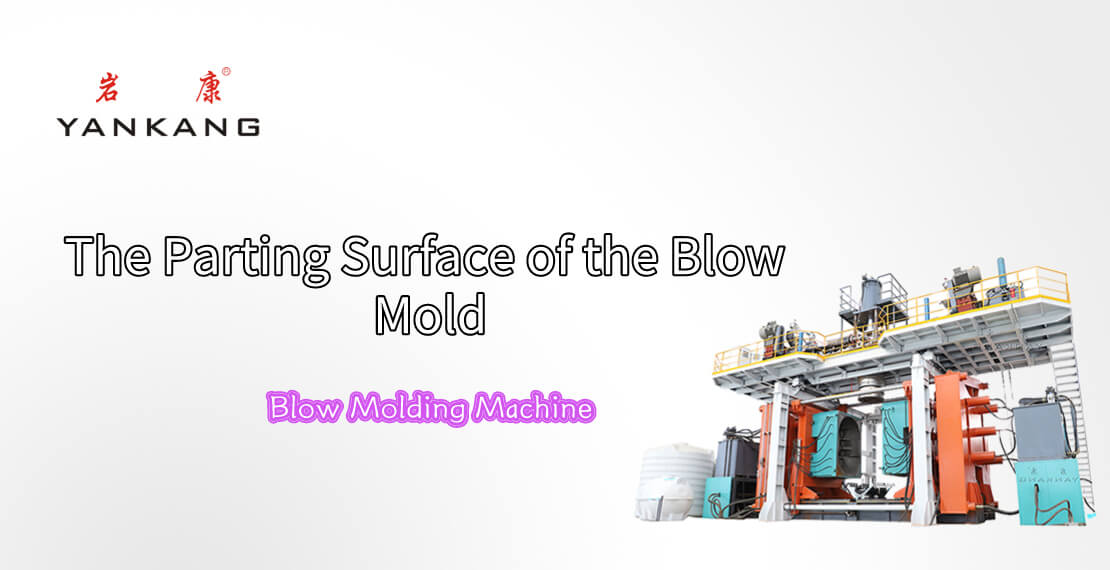Parting surface of the blow mold is our topic today.
Generally speaking, molds are composed of two parts: movable mold and fixed mold (or male mold and female mold).
(More information: design requirements of extrusion blow mold)
The parting surface of the blow mold refers to the part that the two can contact when they are closed. It is also the dividing surface that divides the workpiece or mold part into mold volume blocks.
The design of the parting surface of the blow mold directly affects the quality of the product, the mold structure and the difficulty of the operation, and is one of the key factors for the success or failure of the mold design.
The following principles should be followed when determining the parting surface of the blow mold:

- The mold structure should be as simple as possible.
Such as avoiding or reducing lateral typing. The special-shaped parting surface is used to reduce the repair of moving and fixed molds to reduce processing difficulty.
- It is conducive to the smooth demoulding of plastic parts.
For example, after the mold is opened, try to keep the plastic part on the side of the movable mold to use the ejection mechanism on the blow molding machine, and avoid the long-distance core pulling in the lateral direction to reduce the mold size.
- Ensure the dimensional accuracy of the product.
For example, try to set the parts with dimensional accuracy requirements on the same module to reduce manufacturing and assembly errors.
- Does not affect the appearance quality of the product.
Flash inevitably appears at the parting surface of the blow mold. Therefore, designing parting surfaces on a smooth surface should be avoided.
- Ensure the smooth exhaust of the cavity.
For example, the parting surface of the blow mold should coincide with the surface wall of the last filled cavity as much as possible to facilitate the exhaust of the cavity.
When the blow molding product is asymmetrical or concave-convex or the neck is inclined, and the complicated product with a flange connection structure, the parting surface must be designed as a curved surface or a conical surface including an inclined surface, that is, curved surface parting blow molding mold.
When using curved surface parting, the setting of the parting surface position should consider the following aspects.
- Avoid the sinking part of the product causing difficulty in taking out the product.
- In order to make the wall thickness of each part of the product uniform, the setting stress diagram of the parting surface of the blow mold improves the tendency of the wall thickness of the larger part of the blown expansion to be reduced.
- The flanges and necks used to combine on the product have certain strength requirements. The parting surface of the blow mold should pass through these parts, otherwise it will be difficult to form.
- It should be considered that the neck and other parts of the mold cavity have good manufacturability.
- In order to prevent the parison from cracking when closing the mold, and to make it have sufficient strength, the unevenness of the parting surface of the blow mold should be reduced as much as possible, and sharp corners and too small rounded corners should be avoided. If the parting surface has a large degree of unevenness, it should be ensured that there is enough stroke when opening the mold so as to affect the removal of the product.
- It should be ensured that the blow molding process can proceed smoothly. After the curved parting surface is determined, the opening and closing direction of the mold must be further considered to minimize the shear stress on the guide pin and the guide sleeve caused by the clamping force. In order to facilitate the processing and inspection of the mold, as far as possible, do not make the reference surface of the cavity processing tilt.
When determining the molding direction (whether the product in the mold is upright or upside down), that is, in the extrusion direction of the parison, when the cavity is upright or upside down, you should pay attention to:
①In order to reduce the cost of forming operations, the diameter of the parison should be as small as possible if allowed.
②Considering that the sag will affect the distribution of the wall thickness of the parison, the parts where the expansion is relatively large and the parts where the wall thickness is not easy to guarantee at the joints should be set on the lower side of the mold.
The opening and closing direction of the mold and the determination of the molding direction must ensure that a series of processes such as closing the mold → blowing needle forward → piercing the outer wall of the cavity → blowing → blowing needle back → mold opening → product removal can be carried out smoothly.
This is the end of the introduction about the parting surface of the blow mold.
For more related knowledge about blow molding machines, please continue to pay attention to the Yankang blow molding machine blog.

